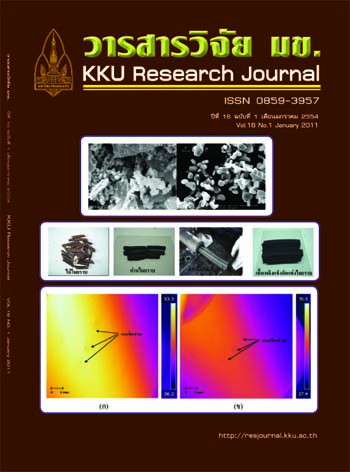Disinfection of bacillus subtilis spores in water using fenton
Main Article Content
Abstract
Fenton in this study was from a combination of 0.05-10 mM ferrous sulfate and 1-180 mM hydrogen peroxide, being irradiated with ultraviolet-A (UV-A) radiation, intensity of 4 mW/cm2, to disinfect Bacillus subtilis spores in water at pH 2.8. Effect of solely 1-600 mM hydrogen peroxide with and without UV-A radiation and effect of pH in a range of 2-5 were also examined.
The results reveal that hydrogen peroxide alone could disinfect B. subtilis spores in a range of 61-100% with no irradiation and 89-100% with UV-A irradiation. Although it was found that the higher the concentration the better the disinfection, beyond the concentration of 180 mM, the disinfection was insigni cantly different. The suitable pH was 2.8 and suitable ferrous sulfate concentration was 0.05-0.1 mM. Higher concentration than 0.1 mM of ferrous sulfate induced precipitation and spores were found in it although spores in the water were reduced. Therefore, the appropriate combination of ferrous sulfate and hydrogen peroxide that completely eliminated all B. subtilis spores and did not create precipitation was 0.1 mM and 180 mM, respectively.


